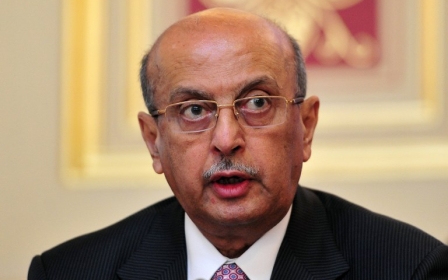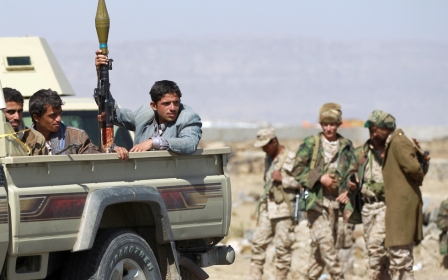Houthi rebels on the offensive in Yemen as ceasefire ends

Hospital sources in Yemen have confirmed that 11 soldiers and 14 Houthi rebels were killed on Tuesday following clashes in Amran, a northern district of the country.
Dozens of other combatants were wounded in a gunfight that erupted on the western outskirts of Amran city, the medics said.
Tensions remain high in the district, where Houthis have been trying to enforce their presence through armed parades and protests against the military.
According to Yemeni military sources, the unrest broke out after two attacks were launched by armed Houthis on army sites east of the city.
Yemeni news site al-Ahale cites local sources as saying that the clashes broke out at around 1am local time, and continued into Tuesday morning.
According to Mareb Press, Sunday saw the end of a temporary ceasefire between the Houthi rebels, who complained of marginalisation under former president Abdullah Saleh and played a key role in his 2011 ouster, and rival sects in the Amran area.
In February, Houthi forces seized areas of Amran province in fighting with tribes that left more than 150 people dead.
On 13 May, the Yemeni foreign minister reiterated in a statement to national news agency SABA that Yemen is on the cusp of a "new phase", with a new constitution and a federalised state.
Houthi rebels complain that the proposed federalisation, agreed in February as part of a "national transition", would divide Yemen into rich and poor regions.
Many suspect that the rebels aim to enlarge their sphere of influence before the implementation of the plan, which would divide the country into six regions.
The Houthis are currently pushing out from their mountain strongholds in the far north towards areas closer to the capital Sanaa.
The Yemeni government is also grappling with an insurgency by southern separatists, who are demanding secession for the regions of the formerly independent south.
Thursday will see the Yemeni National Holiday, which marks the 24th anniversary of the unification of north and south Yemen.
Middle East Eye propose une couverture et une analyse indépendantes et incomparables du Moyen-Orient, de l’Afrique du Nord et d’autres régions du monde. Pour en savoir plus sur la reprise de ce contenu et les frais qui s’appliquent, veuillez remplir ce formulaire [en anglais]. Pour en savoir plus sur MEE, cliquez ici [en anglais].




